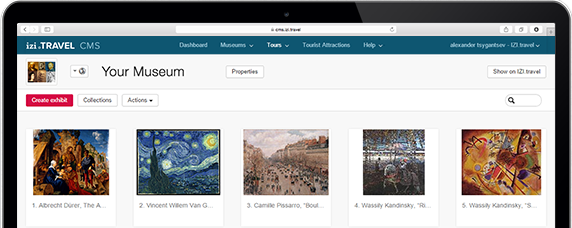Seulement en Anglais
Cathedral del Buen Pastor (Good Shepherd)
Update Required To play the media you will need to either update your browser to a recent version or update your Flash plugin.
Dating back to the late 19th century, San Sebastián's striking Neo-Gothic Buen Pastor Cathedral, designed by the world renowned Basque architect, Manuel de Echave, is the most famous and largest religious building in San Sebastián. As mentioned earlier, the Cathedral stands in a straight line from the Basilica de Santa Maria del Coro; this lends symbolism and unity to both churches.
It is purported that de Echave’s design was inspired by the grand cathedral in Cologne, Germany. Based on size alone, this isn’t surprising. Measuring a full 20,610 square feet (1914.7m²), the cathedral comfortably accommodates 4,000 parishioners. The slender bell tower is located on the portico of the entrance, and again reminds one of the spires on Cologne’s cathedral. Her spire, reaching 246 feet (almost 75 meters) to the sky, can be seen from virtually everywhere in the city.
Built of sandstone in a rectangular floor plan in the shape of the Latin cross, there are three naves, a transept and a presbytery. Both gables of the transept house two large rose windows that accentuate the light inside the church. The stunning stained glass windows throughout are the work of Juan Bautista Lázaro. The high altar is dedicated to the Buen Pastor. It is home to statues of Nuestra Señora del Carmen, San Antonio, Santa Teresa and the Sagrado Corazón.
A wonderful story about the importance of Buen Pastor in Spanish history begins on September 29th, 1888 when the Spanish Royal Family, vacationing in San Sebastián, was invited to the laying of the cornerstone. Following a high mass at another church to mark the occasion, the queen regent, Maria Christina, her children and the Infante Antonio and a cast of other dignitaries placed a lead box in which were enclosed pictures of the Pope and the Royal family, various coins of the time and copies of the Gazette of Madrid and the Ecclesiastical Gazette under the cornerstone of the cathedral.
The minutes of the ceremony were signed by King Alfonso XIII, not quite two years and a half years of age, with considerable help from his mother, Maria Christina. Thus, did the first official signature of the man who became known to the world as King Alfonso XIII of Spain, appear on an official document.
Hours of Operation: Monday through Sunday from 8:30am to 12:30pm and from 5pm (17.00) to 8pm (20.00).
Admission is free.
It is purported that de Echave’s design was inspired by the grand cathedral in Cologne, Germany. Based on size alone, this isn’t surprising. Measuring a full 20,610 square feet (1914.7m²), the cathedral comfortably accommodates 4,000 parishioners. The slender bell tower is located on the portico of the entrance, and again reminds one of the spires on Cologne’s cathedral. Her spire, reaching 246 feet (almost 75 meters) to the sky, can be seen from virtually everywhere in the city.
Built of sandstone in a rectangular floor plan in the shape of the Latin cross, there are three naves, a transept and a presbytery. Both gables of the transept house two large rose windows that accentuate the light inside the church. The stunning stained glass windows throughout are the work of Juan Bautista Lázaro. The high altar is dedicated to the Buen Pastor. It is home to statues of Nuestra Señora del Carmen, San Antonio, Santa Teresa and the Sagrado Corazón.
A wonderful story about the importance of Buen Pastor in Spanish history begins on September 29th, 1888 when the Spanish Royal Family, vacationing in San Sebastián, was invited to the laying of the cornerstone. Following a high mass at another church to mark the occasion, the queen regent, Maria Christina, her children and the Infante Antonio and a cast of other dignitaries placed a lead box in which were enclosed pictures of the Pope and the Royal family, various coins of the time and copies of the Gazette of Madrid and the Ecclesiastical Gazette under the cornerstone of the cathedral.
The minutes of the ceremony were signed by King Alfonso XIII, not quite two years and a half years of age, with considerable help from his mother, Maria Christina. Thus, did the first official signature of the man who became known to the world as King Alfonso XIII of Spain, appear on an official document.
Hours of Operation: Monday through Sunday from 8:30am to 12:30pm and from 5pm (17.00) to 8pm (20.00).
Admission is free.
Téléchargez l'appli gratuite izi.TRAVEL
Créez vos propres visites audio!
L'utilisation du système et de l'appli de guide mobile est totalement gratuite


